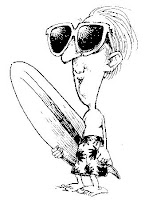 By Brooke Schultz, Communications Coordinator, CRI
By Brooke Schultz, Communications Coordinator, CRISynchronization. It can be daunting and stressful, especially if you’re new to the concept or haven’t had much experience doing it. Heck, it was even a learning experience for our veteran employees when they first began doing it!
Although it seems intimidating, it is a very important reproductive management tool that can improve your dairy's pregnancy rates by leaps and bounds. We understand the synchronization process may be foreign to some, which is why we decided to lay out the basics for you the best we can. This blog post may seem a little technical, but I promise it will be worth the read! Your increased pregnancy rates can thank us later ;)
First, we must cover the basics of the estrous cycle. Synchronization cannot be performed correctly without adequate knowledge of the estrous cycle.
The estrous cycle is a series of changes that take place in the animal from one heat period to the next. It is 21 days long on average. Actual range is 18 to 24 days. It is made up of two phases. The follicular phase is when there is a drop in progesterone levels due to the destruction of the corpus luteum, which leads to an increase in gonadotropin-releasing hormones (GnRH). This allows the animal to come into heat and ovulate. This results in the formation of a new corpus luteum, and the animal returns to the luteal phase.
The luteal phase is when there is an increase in progesterone levels due to the formation of a new corpus luteum resulting from ovulation. This prevents the animal from coming into heat and ovulating. If the egg is not fertilized and pregnancy does not occur, prostaglandin is released leading to the destruction of the corpus luteum, and the animal returns to the follicular phase.
 |
| The estrous cycle includes waves but, nope, not the type you'd grab a surfboard for! |
Within the estrous cycle there are waves. No, not the type of waves you’d grab a surfboard for or the one where you motion your hand to say hello or goodbye. And it’s definitely not the one performed by rowdy, pumped-up sports fans at an arena. This is a completely different type of wave, and one you’ll definitely want to know.
The waves I’m referring to are follicular waves. Understanding these types of waves will help us make more sense of synchronization and why protocols differ between heifers and cows.
Let’s break it down. A follicle is the structure within the ovary which houses the egg. Follicular waves is a phenomena occurring in the ovary throughout the estrous cycle that produces growing follicles capable of ovulating an egg.
Follicular waves begin with the growth of multiple follicles. Soon one follicle becomes dominant and continues to grow while the others die off (yes, survival of the fittest occurs even inside the body). If the follicular wave approaches maturation in the luteal phase, ovulation will not occur due to elevated progesterone levels produced by the corpus luteum. However, if the follicular wave reaches maturation in the follicular stage, ovulation occurs due to increased levels of GnRH which occur in the absence of the corpus luteum.
The number of follicular waves varies with the type of animal. Dairy cows tend to display two wave follicular patterns (Figure 1). Dairy heifers tend to display three wave follicular patterns (Figure 2). Synchronization protocols are designed around the follicular wave pattern displayed by the animal.

Stay tuned for Part 2 of this series as we further explore the nitty gritty of Ovsynch and Presynch!



No comments:
Post a Comment